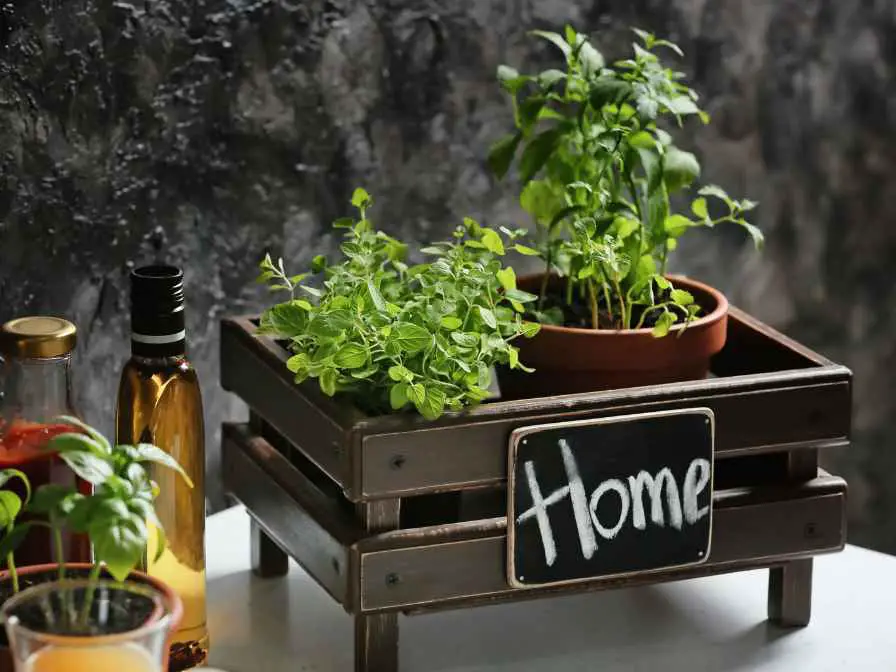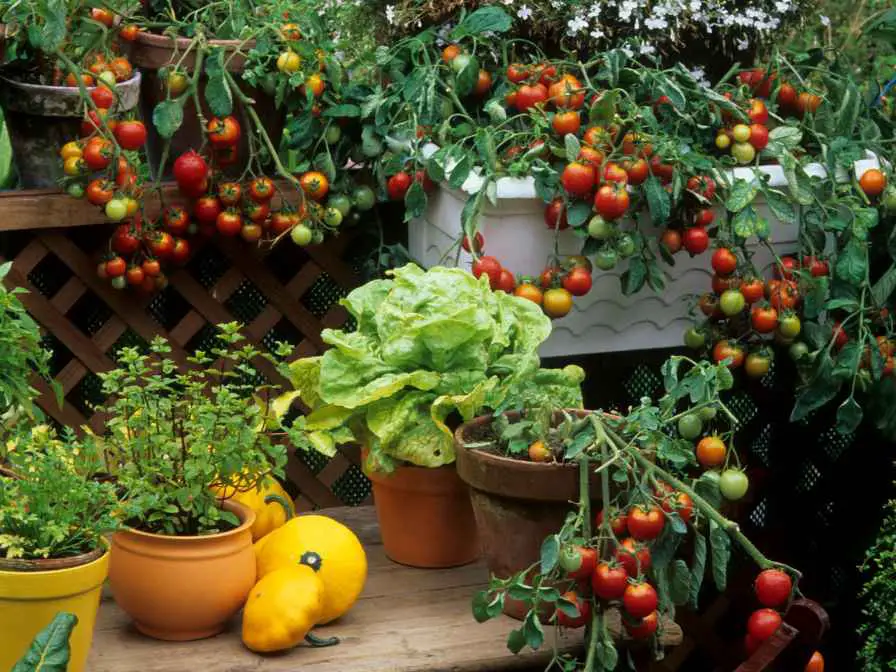Gardening is a hobby or passion for space. You have got the space you are good to go. People use all of the available space, even under the trees. That’s why they wonder what can be grown in shade. Well, we are going to tell you what vegetables grow in shade.

Growing Vegetables
Growing vegetables in shade can be a rewarding and productive way to utilize spaces in your garden that receive limited sunlight. While most vegetables prefer full sun, there are several varieties that can thrive in partial or dappled shade, making them suitable for shady spots.
One important consideration when growing vegetables in shade are to choose the right types of vegetables that are known to tolerate lower light levels. Leafy greens such as lettuce, spinach, and kale are excellent options as they require less direct sunlight and can grow well in dappled or filtered shade.
Other vegetables like radishes, beets, and carrots that primarily grow underground can also do well in partial shade as they don’t rely solely on sunlight for their growth.
When growing vegetables in shade, it’s crucial to pay attention to soil moisture and fertility, as these factors can greatly impact plant growth. Shaded areas tend to retain more moisture, so it’s important to avoid overwatering and ensure proper drainage to prevent waterlogging.
You can add compost, manure, and peat moss to improve soil fertility.
Benefits of Growing Vegetables in the Shade
There are many benefits of growing vegetables in shade. Here we are going to mention some of the important benefits.
Utilizing Otherwise Unused Space
Shady areas in your garden that receive limited sunlight can often be overlooked, but by growing vegetables that tolerate shade, you can make use of these spaces and maximize your gardening potential.
This allows you to optimize the use of your garden and grow vegetables in areas that might have been underutilized otherwise.
Extending the Growing Season
Vegetables that can grow in shade, such as certain leafy greens, can provide an opportunity to extend your growing season. In hot climates, shade can help protect plants from the scorching sun and heat stress, allowing you to continue growing vegetables even during the warmer months when direct sunlight can be intense. This can help you enjoy fresh produce for a longer period of time.
Conserving Water
Shaded areas in the garden tend to retain moisture better compared to sunny areas, which can help conserve water. This means that you may need to water your shade-grown vegetables less frequently, reducing overall water usage and contributing to more sustainable gardening practices.
Diverse & Visually Appealing Garden
Incorporating vegetables that grow in shade can add diversity and visual interest to your garden. Leafy greens, for example, can provide lush, green foliage that can complement other flowering plants or add contrasting textures and colors to your garden design.
Enhancing Biodiversity
Growing vegetables in shade can also contribute to enhancing biodiversity in your garden. By providing habitat and food sources for different organisms, such as insects, birds, and beneficial microorganisms, you can promote a healthier and more balanced ecosystem in your garden.
What Vegetables Grow in Shade
There are a lot of vegetables that can grow in shade. Here we are going to mention some of these as follows:
Lettuce
Lettuce is a popular leafy green that can tolerate partial shade. It prefers cooler temperatures and can grow well in dappled shade, making it ideal for shady spots in your garden. It can be harvested for fresh salads or used in sandwiches, wraps, and other culinary creations.
Spinach
Spinach is another leafy green that thrives in partial shade. It is packed with nutrients and can be grown in areas with limited sunlight. It can be harvested young for baby spinach or allowed to mature for larger leaves, making it a versatile addition to any shady garden.
Kale
Kale is a nutrient-rich vegetable that can tolerate partial shade. It is known for its hardiness and can grow well in shadier areas of the garden. It can be used in various recipes, such as salads, soups, and stir-fries, and is often praised for its health benefits.
Swiss Chard
Swiss chard is a colorful and versatile vegetable that can grow in partial shade. It has vibrant stems and large, dark green leaves that can add visual interest to your garden. It can be cooked like spinach or used raw in salads, and it is known for its earthy and slightly bitter flavor.
Broccoli
Broccoli is a cool-season vegetable that can tolerate partial shade. While it prefers full sun, it can still grow in shadier areas with fewer hours of sunlight. It produces dense heads of florets that are rich in vitamins and minerals, and it can be steamed, roasted, or stir-fried as a delicious and nutritious side dish.
Radish
Radishes are root vegetables that can grow in partial shade. They are quick-growing and can tolerate lower light levels, making them suitable for shadier spots in your garden. Radishes come in various shapes, sizes, and colors, and they can be enjoyed raw in salads, pickled, or roasted.
Carrots
Carrots are another root vegetable that can grow in partial shade. While they prefer full sun, they can still produce decent yields in shadier areas. Carrots are known for their sweet and crunchy texture, and they can be used in a variety of culinary applications, such as stews, soups, and side dishes.
Cauliflower
Cauliflower is a cool-season vegetable that can tolerate partial shade. It produces large, dense heads of tightly packed florets that can add a touch of elegance to your garden. Cauliflower can be steamed, roasted, or mashed, and it is a versatile and nutritious vegetable to incorporate into your meals.
Beets
Beets are root vegetables that can grow in partial shade. They are known for their sweet and earthy flavor and can be enjoyed roasted, pickled, or used in salads. Beets also produce edible greens that can be harvested and used as a leafy green in culinary preparations.
Peas
Peas are a legume crop that can tolerate partial shade. They are known for their sweet and tender pods, and they can be used in a variety of culinary applications, such as soups, stews, and stir-fries. Peas also fix nitrogen in the soil, which can benefit other plants in your garden.
Taking Care of Vegetables in Shades

Taking care of vegetables in shades requires some attention. Here are some of the steps:
Choose the Right Varieties
Not all vegetable varieties are suitable for shade. Look for shade-tolerant varieties when selecting seeds or transplants for your garden. These varieties are adapted to grow with limited sunlight and will have a better chance of thriving in shaded conditions.
Monitor Soil Moisture
Shaded areas can sometimes be damp and prone to poor drainage. Be sure to monitor the moisture level of the soil and avoid overwatering, as this can lead to root rot and other issues. Make sure the soil is well-drained and consider adding organic components, such as peat moss or compost, to improve the soil fertility.
Provide Adequate Nutrition
Shaded areas may have lower nutrient availability due to reduced sunlight, so it’s important to provide adequate nutrition to your shade-grown vegetables. Consider amending the soil with organic matter or using a balanced fertilizer to provide essential nutrients for healthy growth.
Pay Attention to Pests and Diseases
Shaded areas may be more susceptible to pests and diseases due to reduced airflow and increased humidity. Regularly inspect your plants for signs of pests or diseases and take appropriate measures, such as using organic or chemical controls, to manage them.
Prune for Better Airflow and Light Penetration
Shaded areas may have limited airflow, which can increase the risk of diseases. Prune your shade-grown vegetables to remove any overcrowded or diseased foliage, which can improve airflow and light penetration to the remaining foliage.
Rotate Crops
Just like in a sunny garden, crop rotation is important in a shade garden as well. Avoid planting the same type of vegetable in the same spot year after year to prevent the buildup of pests and diseases in the soil.
Provide Additional Light if Needed
If your shaded area receives very limited sunlight, you may consider providing artificial light, such as grow lights, to supplement the available light. This can help your shade-grown vegetables get the light they need for healthy growth.
In short, vegetables can be grown in the shade easily. Just you have to make sure you take the required care in a good manner.
FAQs
Is shade good for a vegetable garden?
There is a misconception that shade is not good. It can be good for summer vegetables. Vegetables are green and they do need light. But some of the varieties can survive in shade or partial shade.
How do you shade vegetable plants?
You can plant your vegetables in the shady area of trees, where they are in full shade or there is partial shade. Otherwise, use shade cloth which is commonly available for gardens.

